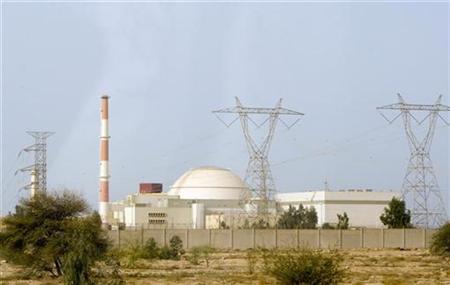New IAEA Report Charges Iran Experimented with Nuclear Weapons Components
James Phillips /
The International Atomic Energy Agency’s (IAEA) long-awaited report on Iran’s nuclear program was released today, confirming longstanding suspicions that Iran has made substantial progress in its nuclear weapons program. The IAEA’s quarterly report concluded:
The Agency has serious concerns regarding possible military dimensions to Iran’s nuclear programme. After assessing carefully and critically the extensive information available to it, the Agency finds the information to be, overall, credible. The information indicates that Iran has carried out activities relevant to the development of a nuclear explosive device.
The IAEA report urged Tehran to “engage substantively with the Agency without delay for the purpose of providing clarifications regarding possible military dimensions to Iran’s nuclear programme.” Iran’s rogue regime, which has stubbornly spurned previous IAEA calls for clarification, is unlikely to comply. Iranian President Mahmoud Ahmadinejad already has denounced the report, charging that “The Americans have fabricated a stack of papers and he [IAEA Director General Yukiya Amano] keeps speaking about them.
Previous IAEA reports have focused primarily on Iran’s efforts to produce fissile material, which could fuel a nuclear reactor or arm a nuclear weapon. This latest report broke new ground by citing evidence that Iran has experimented with the components of a nuclear weapon and worked on engineering studies for fitting a nuclear payload into Iran’s Shahab 3 ballistic missile. A 12-page annex also covered Iran’s contacts with foreign experts, its procurement activities, and preparatory experiments for conducting a test of a nuclear explosive device, among other subjects.
The Washington Post reported that one unnamed foreign expert referred to in the annex was Vyacheslav Danilenko, a former Soviet nuclear scientist who worked in Iran in the 1990s, and that other help came from North Korea and from Pakistan’s nuclear smuggling network, run by A.Q. Khan, the “father” of Pakistan’s nuclear weapons program.
The IAEA report is sure to reopen the debate over the controversial 2007 National Intelligence Estimate (NIE), which concluded that Iran had halted its nuclear weaponization efforts in 2003. The Heritage Foundation lambasted the NIE at the time and has continued to point out the NIE’s weaknesses in light of Iran’s continued nuclear efforts.
The new IAEA report also should inject a greater sense of urgency into the Obama Administration over Iran’s accelerating nuclear efforts. The Administration has appeared complacent in recent months, promoting the narrative that the stuxnet virus unleashed on Iran’s nuclear infrastructure has dealt Iran’s nuclear program a devastating setback. But as Stephen Rademaker and Blaise Misztal noted in a persuasive op-ed today, Iran’s uranium enrichment efforts were only temporarily slowed and now continue to grow at an alarming rate.
Given the Obama Administration’s lethargic response to Iran’s continued nuclear efforts, it is no wonder that the Israeli government reportedly is mulling a preventive strike against Iran’s nuclear infrastructure. The Obama Administration needs to step up its efforts to pressure Iran to halt its nuclear weapons efforts, or Israel soon could be tempted to take military action to address a growing existential threat.

